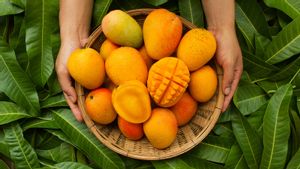The mango season in India is a highly anticipated time of the year when the country's most beloved fruit is in abundance. Known as the ‘king of fruits', mangoes are celebrated for their delicious flavour, aromatic fragrance, and vibrant colours.
Mangoes hold immense cultural significance in India. They are not only relished as a delectable fruit but also revered in mythology, literature, and art. In Hindu mythology, the mango tree is considered sacred and symbolises love and fertility. The mango is associated with Lord Ganesha, the elephant-headed deity who is worshipped at the beginning of new ventures. Mango leaves are used to decorate entrances during festivals and auspicious occasions. Traditional Indian textiles and designs often feature motifs inspired by mangoes. Additionally, mangoes are an integral part of Indian cuisine, used in various dishes, desserts, and beverages.
Mangoes are cultivated in various regions of India, taking advantage of the country's diverse climates. The states of Maharashtra, Gujarat, and Uttar Pradesh are major mango-growing regions. Ratnagiri and Devgad in Maharashtra are famous for their Alphonso mangoes. The foothills of the Girnar mountains in Gujarat are known for Kesar mangoes. Uttar Pradesh, particularly Malihabad, is famous for Dasheri mangoes. Other regions such as Bihar, Karnataka, Andhra Pradesh, Tamil Nadu, and West Bengal also contribute significantly to India's mango production.
Mango cultivation plays a vital role in India's agricultural economy. The fruit is a significant source of income for farmers, providing employment opportunities and contributing to rural development. India is the largest producer of mangoes globally, accounting for a substantial share of the world's mango production. The export of Indian mangoes brings in foreign exchange earnings for the country. Mango festivals and exhibitions are organised to promote the mango trade and showcase the diverse varieties to domestic and international buyers.
The mango season in India typically begins in April or May and lasts until July or August, depending on the region and variety. The season's duration varies due to differences in climatic conditions across the country. The earliest varieties, such as Alphonso and Kesar, ripen in April and May, while the later varieties, such as Totapuri and Badami, mature in June and July.
Here are descriptions of several popular mango varieties found in India:
1. Alphonso
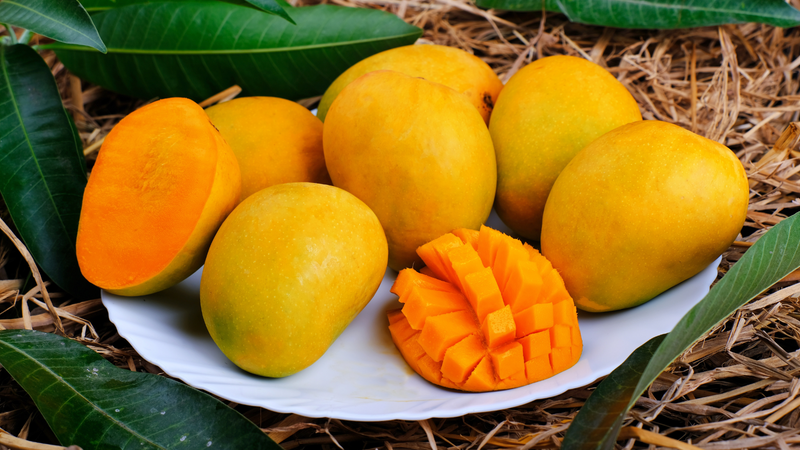
Also known as Hapus, Alphonso is considered the king of mangoes. It is renowned for its sweet, rich, and creamy taste. Alphonso mangoes have vibrant golden-yellow skin with a smooth texture and are predominantly grown in Maharashtra, particularly in the Ratnagiri and Devgad regions.
2. Kesar
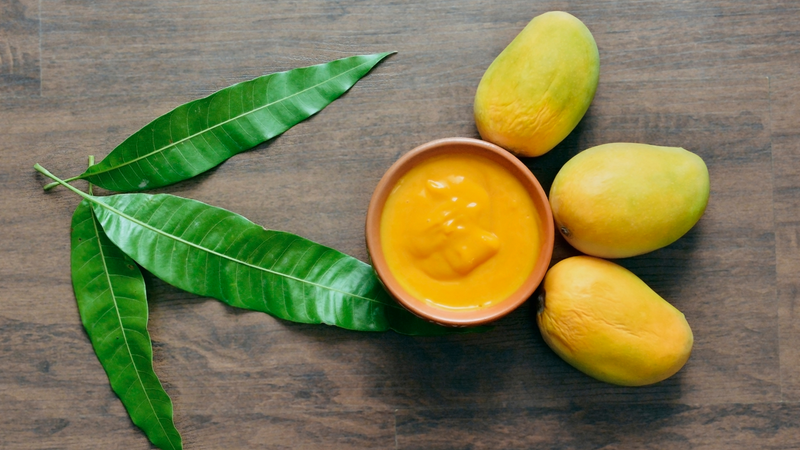
Kesar mangoes are known for their saffron-like aroma and sweet, tangy taste. They have pale yellow skin with a greenish tinge and fibrous flesh. Kesar mangoes are primarily cultivated in the Gujarat region.
3. Langra
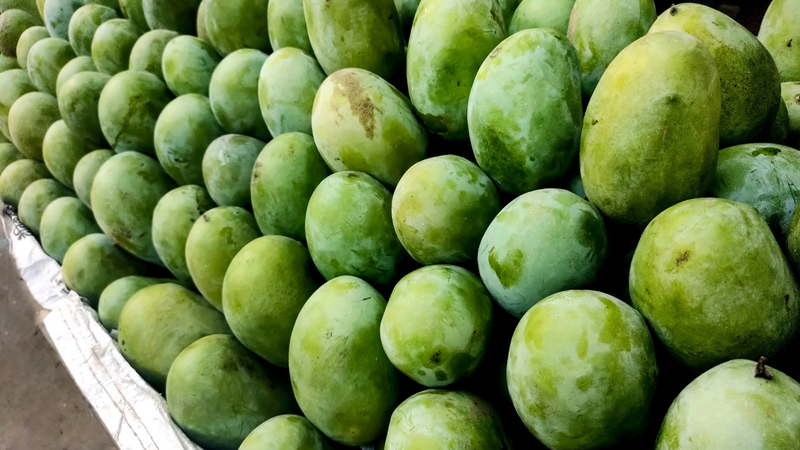
Langra mangoes are popular for their sweet and citrusy flavour. They have greenish-yellow skin and a fibrous texture. Langra mangoes are mainly grown in the northern regions of India, particularly in Uttar Pradesh and Bihar.
4. Dashehri
Dashehri mangoes are known for their fragrant aroma and deliciously sweet taste. They have yellowish skin with a reddish blush and fiberless, juicy flesh. Dashehri mangoes are primarily cultivated in the Malihabad region of Uttar Pradesh.
5. Totapuri
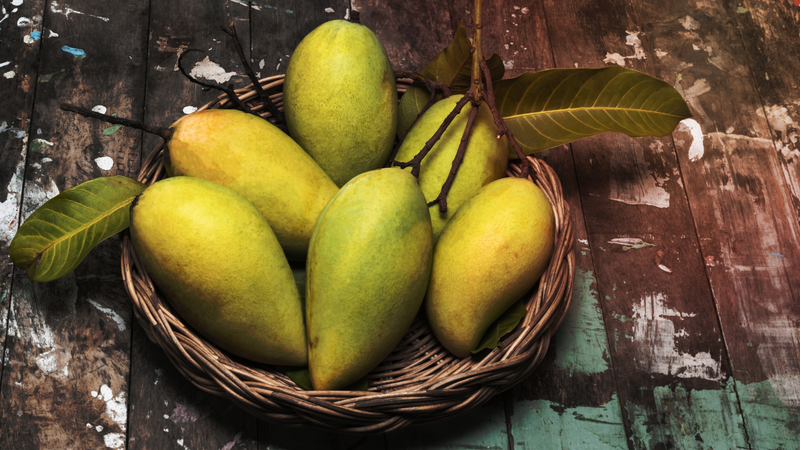
Totapuri mangoes are easily recognisable due to their distinctive shape—elongated and curved, like a parrot's beak. They have a tangy taste and are often used in the preparation of pickles, chutneys, and juices. Totapuri mangoes are grown in several states, including Andhra Pradesh, Karnataka, and Tamil Nadu.
6. Neelam

Neelam mangoes are known for their vibrant orange skin and sweet flavour. They have juicy, fiberless flesh and are often enjoyed as a dessert mango. Neelam mangoes are cultivated in various regions of India, including Andhra Pradesh, Tamil Nadu, and Karnataka.
7. Himsagar
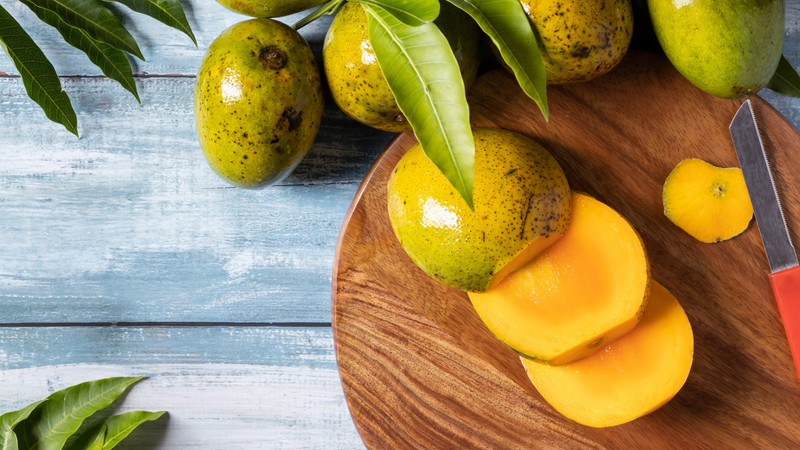
Himsagar mangoes are popular in West Bengal and are prized for their unique flavour and fragrance. They have greenish-yellow skin with a smooth texture and a fleshy, fiberless pulp. Himsagar mangoes are considered one of the best mango varieties in terms of taste and aroma.
8. Rajapuri
Rajapuri mangoes are large in size with thick skin and a bright yellow colour. They have a sweet and slightly tangy taste, making them suitable for both eating fresh and using in culinary preparations. Rajapuri mangoes are predominantly grown in Maharashtra.
9. Malgova

Malgova mangoes are native to Tamil Nadu and are known for their large size and delicious taste. They have greenish-yellow skin with a thick texture and juicy, fiberless flesh. Malgova mangoes are often used to make mango-based desserts and milkshakes.
10. Banganapalli
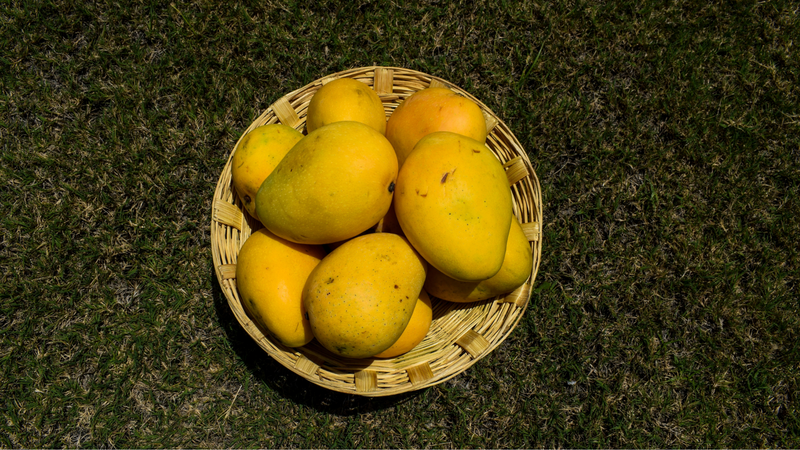
Banganapalli mangoes, also known as Benishan, are primarily grown in Andhra Pradesh. They have an oblong shape and yellow skin with a thin texture. Banganapalli mangoes have a sweet and slightly sour taste, making them popular for both eating fresh and using in mango-based recipes.
Disclaimer: The details mentioned throughout this blog are sourced from publicly accessible platforms. At Zeezest, we intend to share factual and verified information. Should there be any inconsistencies or variances in the information provided, please understand that these are entirely unintentional and not meant to mislead.



